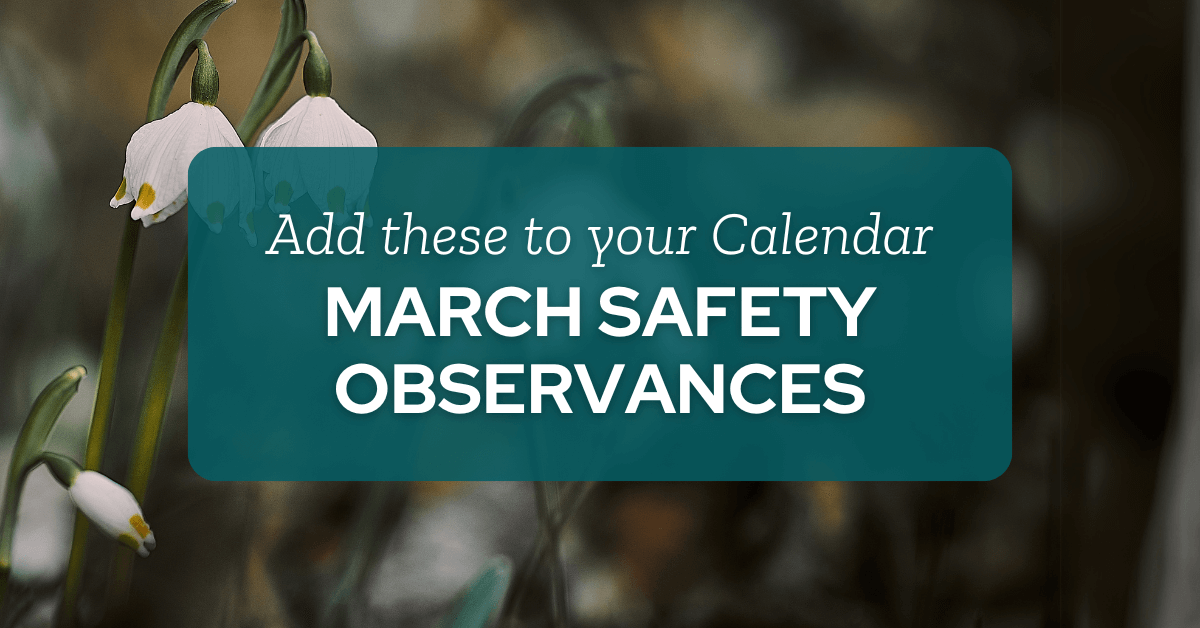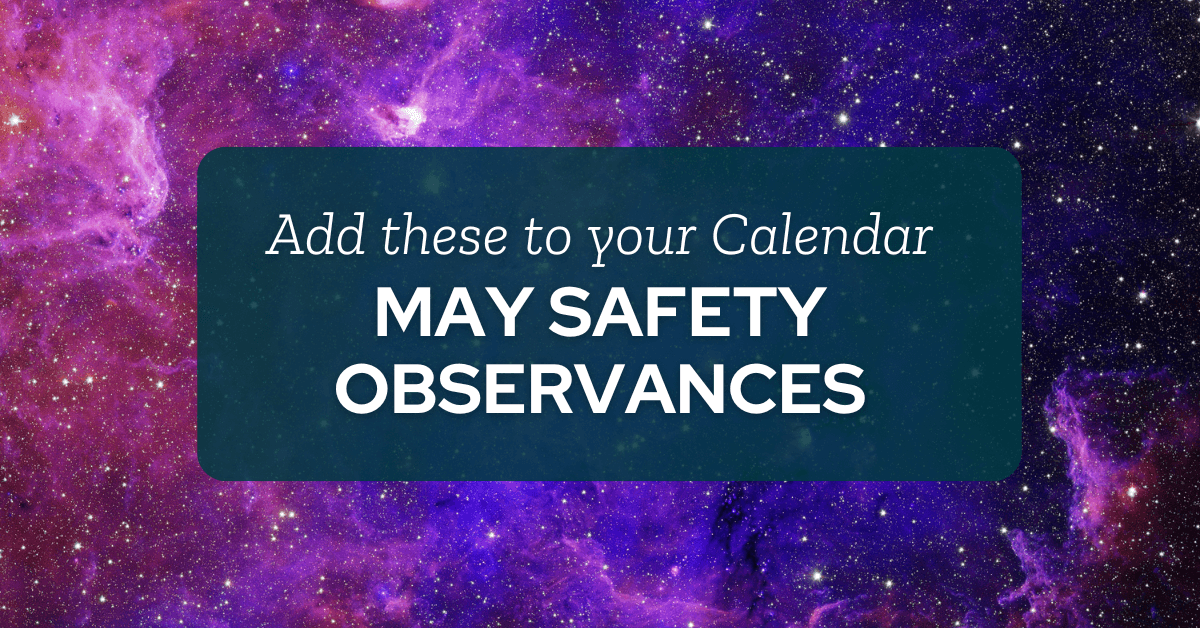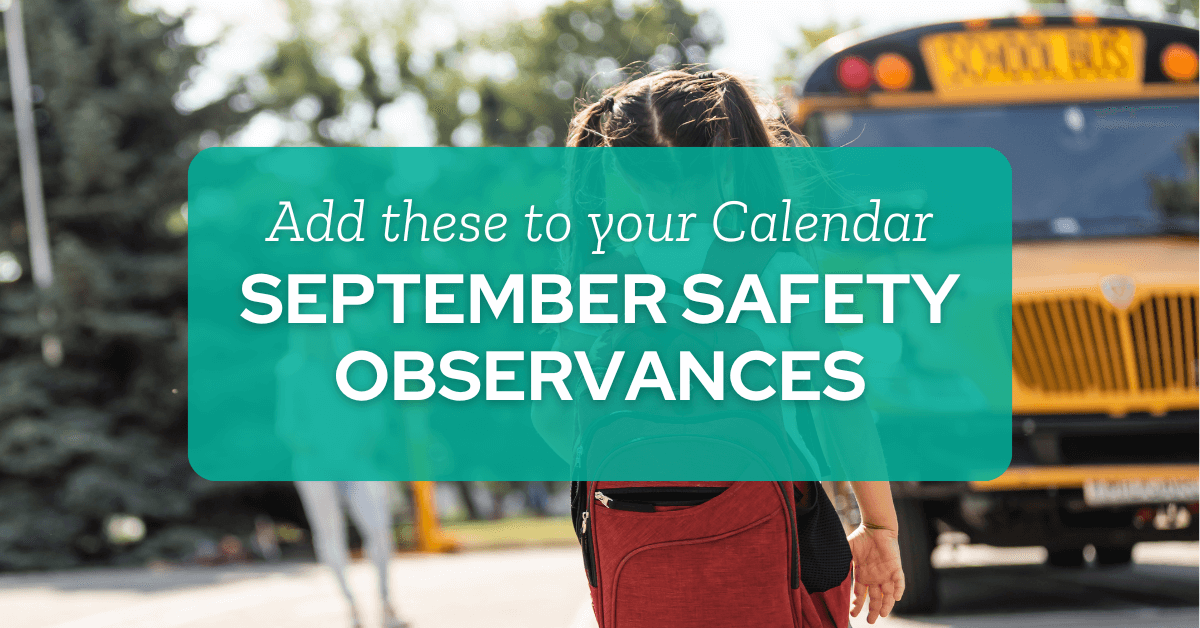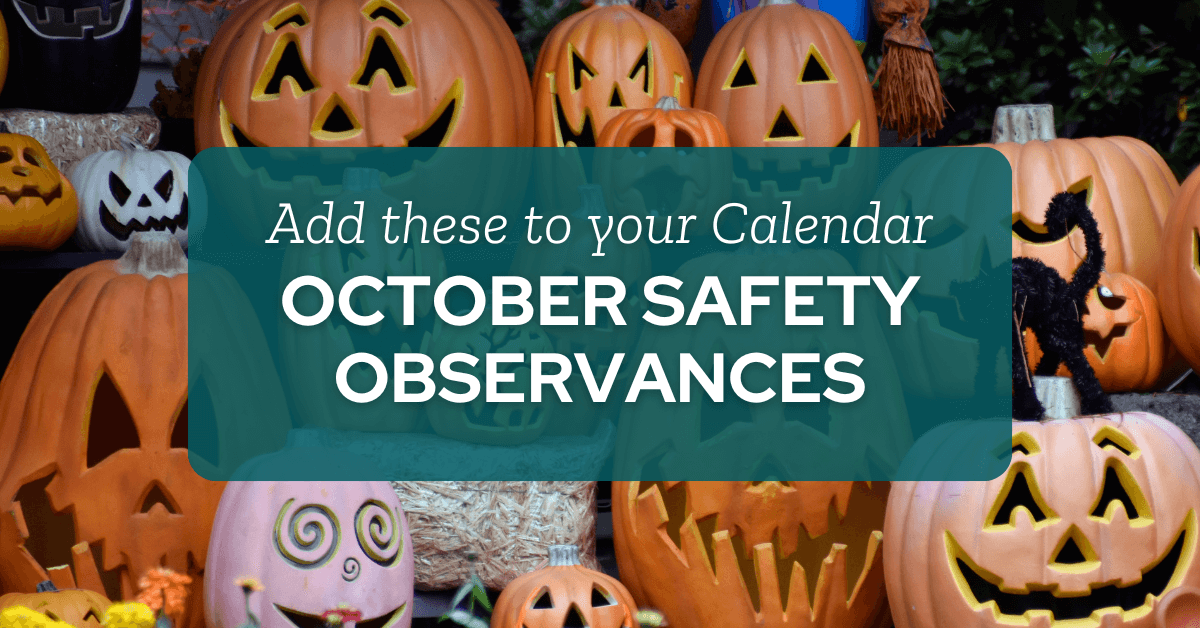Workplace safety remains a critical priority for organizations committed to protecting their employees and maintaining regulatory compliance. The 2025 Safety Observance Calendar offers a structured approach to raise awareness about critical safety topics throughout the year. By implementing this comprehensive resource companies can foster a robust safety culture, reduce incidents and accidents, and create a safer work environment for all staff members. This guide explores how to effectively utilize safety observances to engage employees, address safety concerns, and reinforce proper safety procedures across your organization.
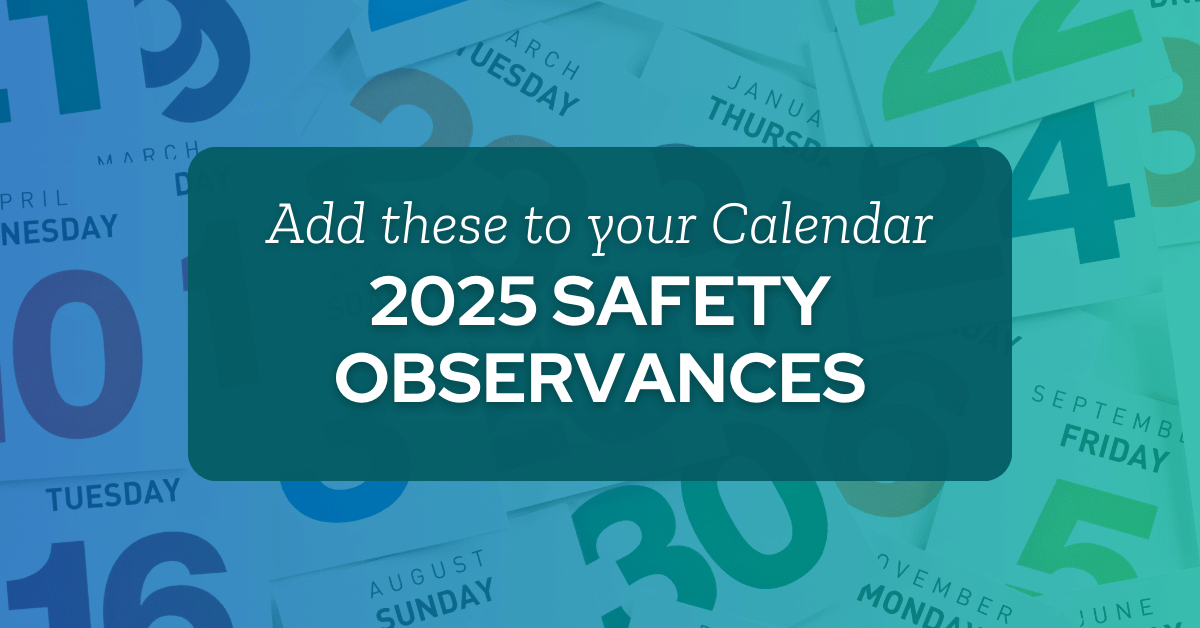
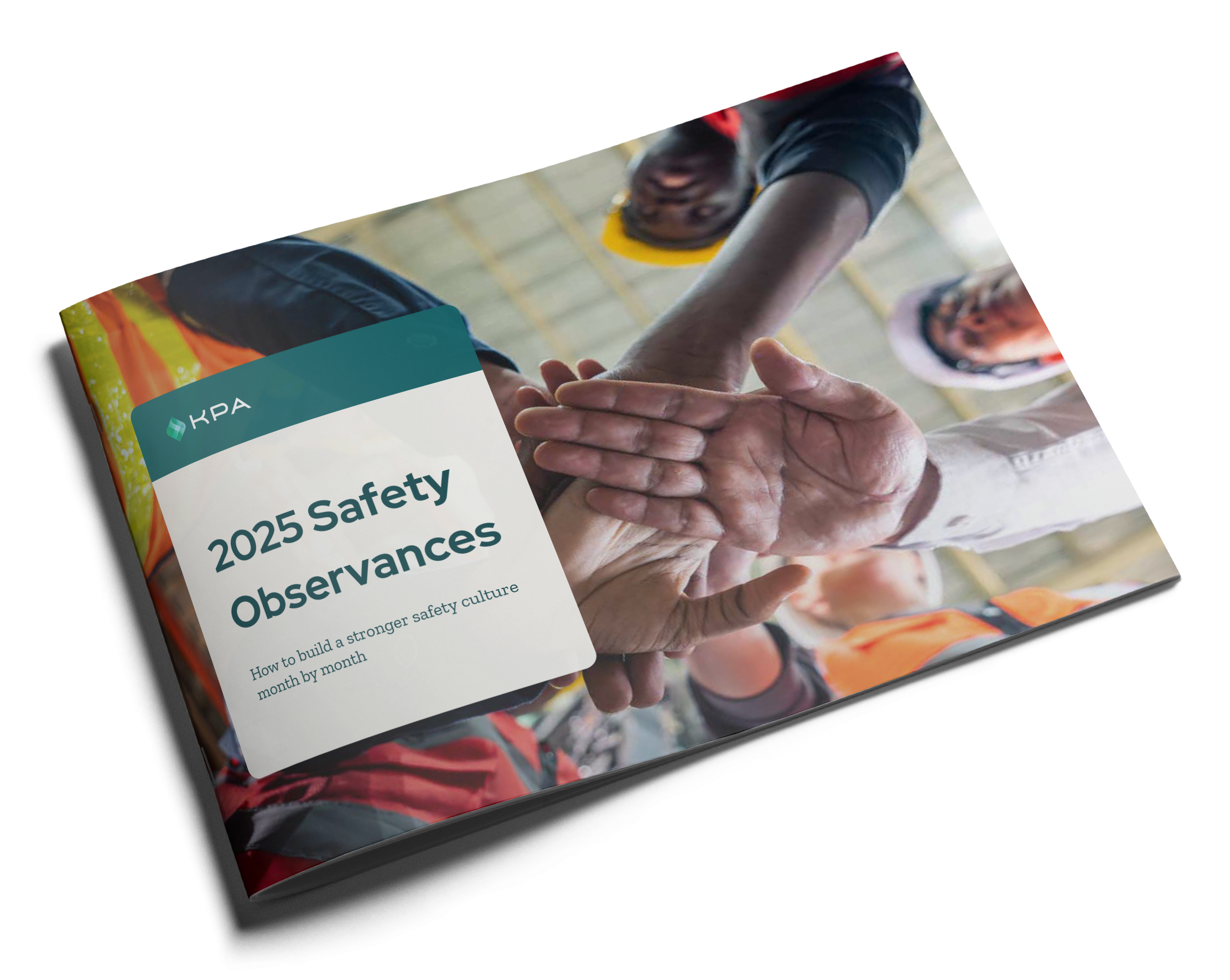
Build a stronger safety culture month by month. The 2025 Safety Observances Guide is designed to be your comprehensive companion for planning and executing meaningful safety initiatives throughout the year.
What Are Safety Observances and Why Are They Important for the Workplace?
Safety observances create unique opportunities to foster employee engagement with safety initiatives that might otherwise receive minimal attention. By transforming standard safety protocols into interactive events tied to national observances, organizations can generate genuine interest and participation across all levels of staff. The Safety Observance Calendar provides a framework for planning engaging activities that connect employees to the broader purpose behind safety procedures. Well-executed observances encourage workers to become active participants rather than passive recipients of safety information, fundamentally changing how they perceive workplace hazards and their personal responsibility in maintaining a safer environment.
When implemented thoughtfully, safety observances build community around safety concerns through shared experiences and collective learning. Activities like team-based safety challenges during National Safety Month or specialized fire safety drills during Fire Prevention Week create memorable moments that reinforce key safety concepts. These events provide natural opportunities for safety talks and discussions about near-misses or potential hazards employees have noticed. The calendar structure also allows organizations to recognize and reward safety-conscious behaviors systematically throughout the year. This consistent approach to engagement helps integrate safety awareness into the company culture, transforming safety from an obligation into a valued organizational priority embraced by employees at all levels.
By aligning internal safety initiatives with nationally recognized observances, employers create a systematic approach to addressing mandatory safety standards established by OSHA and other regulatory agencies. This structured calendar of safety events ensures that critical compliance topics such as proper PPE usage, emergency preparedness, and hazard communication receive dedicated attention throughout the year. The Safety Observance Calendar serves as a valuable roadmap for safety professionals tasked with maintaining compliance requirements while making safety protocols more accessible to employees.
This proactive approach not only satisfies compliance obligations but also proves invaluable in preventing the costly penalties and reputational damage associated with safety violations.
Safety observances are designated days, weeks, or months dedicated to highlighting specific safety topics in the workplace environment. These observances serve as structured milestones throughout the year, providing organizations with opportunities to prioritize particular safety initiatives and educate employees about relevant hazards. The National Safety Council and other regulatory bodies establish these observances to create consistency across industries and reinforce the importance of workplace safety protocols. By recognizing these events, employers demonstrate their commitment to safety awareness and continuous improvement in their safety procedures.
The strategic implementation of safety observances helps organizations maintain focus on safety year-round rather than treating it as a one-time initiative. Each observance typically includes recommended topics, activities, and safety resources that companies can incorporate into their broader safety programs. These structured observances create natural touchpoints for safety discussions, allowing organizations to systematically address various aspects of workplace safety while keeping employee engagement high and making safety a visible, ongoing priority.
How Can Safety Awareness Events Improve Safety in Your Organization?
Monthly safety themes provide a systematic framework for comprehensive workplace safety coverage throughout the year. Each month features topics that organizations can expand into detailed training sessions, toolbox talks, and practical exercises. By structuring your safety strategy around these monthly themes, you create a balanced approach that addresses both general safety principles and industry-specific hazards relevant to your workplace. This integration ensures that key concerns receive appropriate attention while preventing the fatigue that can occur when safety topics become repetitive or disconnected from employees’ daily responsibilities.
Effective integration of monthly safety themes requires thoughtful planning to make them meaningful rather than perfunctory. Safety professionals should customize each theme to reflect specific workplace conditions, accident history, and employee feedback on perceived hazards. For example, during Electrical Safety Month, manufacturing facilities might focus on machine lockout/tagout procedures, while office environments might emphasize proper power strip usage and fire prevention. The calendar provides flexibility to adapt these monthly observances to your organizational needs while maintaining a structured approach to safety awareness. This customization helps foster genuine engagement as employees recognize the relevance of safety discussions to their specific work environment. Regular reinforcement through monthly themes also helps embed safety protocols into your company culture, making compliance a natural part of daily operations rather than an externally imposed requirement.
Monthly safety observances are invaluable planning tools for safety professionals seeking to implement a comprehensive safety strategy. By mapping out nationally recognized events across the entire year, organizations can develop a structured approach to addressing diverse safety topics while maintaining consistent engagement. This proactive planning allows safety teams to allocate resources efficiently, prepare training materials in advance, and coordinate with different departments to ensure maximum participation. The calendar helps safety managers transition from reactive to preventative approaches by establishing clear timelines for addressing specific hazards before they contribute to workplace incidents or accidents.
Using the calendar strategically also helps organizations align safety initiatives with operational realities and business cycles. For example, construction companies might emphasize fall protection during National Safety Month in June when outdoor work increases, while manufacturing facilities might focus on machine guarding during Safe + Sound Week. This provides flexibility to prioritize safety observances most relevant to your work environment while maintaining a comprehensive safety awareness approach. This systematic planning ensures that safety doesn’t become compartmentalized but integrates seamlessly with regular business operations, helping organizations build a safety culture where compliance and hazard recognition become natural components of everyday work procedures rather than isolated safety events.
What Should You Cover During Safety Observances?
Selecting appropriate safety topics for observances requires a thorough assessment of your specific workplace environment, historical incident data, and industry-specific hazards. Begin by analyzing your organization’s accident reports, near-miss documentation, and workers’ compensation claims to identify recurring safety concerns that need reinforcement. Industry-specific resources from the National Safety Council can provide guidance on common hazards within your sector that should be prioritized in your safety observance calendar. For example, construction companies might emphasize fall protection and struck-by hazards, while healthcare facilities might focus on bloodborne pathogens and ergonomics. This targeted approach ensures your safety observances address genuine risks rather than generic safety concepts.
Employee input proves invaluable when identifying relevant safety topics that might otherwise be overlooked. Conduct safety surveys, establish suggestion systems, or host roundtable discussions where workers can express their safety concerns and highlight potential hazards they’ve observed. These insights from frontline staff often reveal safety topics that management might not prioritize but represent significant risks to daily operations. Additionally, consider regulatory compliance requirements specific to your industry when selecting safety topics. The 2025 Safety Observance Calendar can be customized to include OSHA-mandated training deadlines alongside national observances, creating a comprehensive approach to safety awareness and compliance. This strategic selection of safety topics demonstrates to employees that safety initiatives are responsive to their actual work environment rather than merely checking boxes for regulatory purposes.
Selecting impactful safety topics requires balancing established safety observances with specific workplace hazards that directly affect your employees. The most effective approach examines incident trends and near-miss reports to identify recurring safety concerns that warrant focused attention. For instance, if your organization has experienced several slip-and-fall incidents, incorporating a slip prevention emphasis during National Safety Month would provide timely reinforcement of proper protocols. Additionally, consider seasonal hazards when scheduling safety topics – heat stress awareness becomes particularly relevant during summer months, while winter driving safety naturally aligns with colder seasons. This strategic alignment of safety topics with both national observances and your organization’s unique safety profile maximizes relevance and engagement.
The 2025 Safety Observance Calendar offers numerous established topics, but customization remains essential for enhancing genuine awareness. Rather than attempting to cover every possible safety concern, prioritize depth over breadth by selecting fewer topics that receive comprehensive treatment. For each safety observance, consider developing a multi-faceted approach that includes theoretical knowledge, practical demonstrations, and opportunities for employee feedback. For example, during Fire Prevention Week, complement standard fire safety talks with hands-on fire extinguisher training and evacuation drills. This approach transforms abstract safety concepts into concrete skills that employees can apply in real emergencies. Additionally, rotate safety topics strategically rather than repeating the same themes annually – this prevents safety fatigue while ensuring comprehensive coverage of all relevant hazards over time. The goal remains creating meaningful safety discussions that employees recognize as directly applicable to their work environment rather than generic compliance exercises.
Fire safety and hazard preparedness represent critical components of any comprehensive workplace safety program and deserve dedicated focus within the 2025 Safety Observance Calendar. Fire Prevention Week in October provides an ideal opportunity to review evacuation procedures, inspect fire suppression systems, and conduct hands-on fire extinguisher training. However, effective organizations integrate fire safety awareness throughout the year rather than limiting it to a single observance. Consider implementing quarterly fire drills with varying scenarios to ensure employees remain prepared for different types of emergencies. These regular exercises help identify potential bottlenecks in evacuation routes and familiarize new employees with emergency protocols before an actual incident occurs.
Beyond fire-specific concerns, general hazard preparedness should address the full spectrum of potential emergencies relevant to your workplace environment. National Preparedness Month in September offers an excellent framework for comprehensive emergency planning, including natural disasters, medical emergencies, and workplace violence response. Use this observance to review and update emergency action plans, verify that first aid supplies remain adequately stocked, and ensure employees understand communication procedures during crisis situations. Consider incorporating tabletop exercises where management teams work through hypothetical emergency scenarios to identify gaps in current preparedness protocols. The 2025 Safety Observance Calendar should balance proactive hazard prevention with reactive emergency response training, recognizing that even the safest workplaces require thorough preparation for unexpected incidents. This dual focus helps create a work environment where employees feel confident in both preventing accidents and responding appropriately when emergencies arise despite best preventative efforts.
How to Engage Employees During Safety Observance Events
Interactive safety talks transform traditional one-way presentations into engaging learning experiences that significantly improve knowledge retention and practical application. Rather than delivering lectures about safety procedures, incorporate scenario-based discussions where employees must think critically about how they would respond to specific workplace hazards. For example, during a safety observance focused on PPE compliance, present actual workplace scenarios where employees must identify what protective equipment would be required and why. This approach connects abstract safety concepts to concrete workplace situations, making safety protocols more meaningful. Additionally, incorporate visual demonstrations whenever possible – seeing proper lifting techniques demonstrated is far more effective than simply discussing them during National Ergonomics Month observances.
Employee-led safety discussions represent another powerful engagement strategy within the 2025 Safety Observance Calendar framework. Invite experienced staff members to share personal stories about near-misses or accidents they’ve witnessed, creating powerful testimony about the importance of following safety protocols. These peer-to-peer exchanges often resonate more deeply than management directives. Structure these discussions to encourage participation through small group formats where employees feel comfortable asking questions and raising safety concerns they’ve noticed in their work environment. Consider using digital tools like interactive polling or safety-focused mobile applications to gather real-time feedback during larger safety talks. The National Safety Council provides numerous resources for creating interactive safety discussions that can be customized for specific observances throughout the year. This participatory approach not only improves engagement but also helps identify safety issues that management might overlook, leveraging the collective experience of your entire workforce to create a safer workplace environment.
Strategic incentive programs can significantly boost employee participation in safety observances while reinforcing positive safety behaviors throughout the year. When designing reward structures, focus on recognizing proactive safety contributions rather than simply acknowledging accident-free periods, which can inadvertently discourage reporting of minor incidents. For example, implement a recognition system during National Safety Month where employees receive acknowledgment for identifying workplace hazards, suggesting safety improvements, or demonstrating exceptional compliance with safety protocols. These incentives should be meaningful but proportional – simple recognition during safety meetings might suffice for minor contributions, while more substantial safety suggestions might warrant formal recognition from senior management or small rewards like company merchandise.
Effective safety incentive programs align with specific observances in the 2025 Safety Observance Calendar to create themed engagement opportunities. Consider implementing safety bingo during monthly observances, where employees earn spaces for participating in safety talks, completing safety quizzes, or reporting near-misses. Team-based competitions can be particularly effective during extended observances like National Safety Month, creating positive peer pressure that reinforces safety awareness across departments. However, carefully structure these programs to avoid creating situations where employees might conceal incidents to preserve team standings. Additionally, vary your incentive approaches throughout the calendar year to maintain fresh engagement – recognition boards might work well for one observance, while safety luncheons might be more appropriate for another. The National Safety Council offers guidance on structuring compliant incentive programs that genuinely improve safety engagement without running afoul of regulatory concerns about reporting suppression. When properly implemented, these reward systems transform safety observances from obligatory events into engaging activities that employees genuinely look forward to participating in throughout the year.
Safety drills and practical exercises transform abstract safety concepts into concrete skills that employees can apply during genuine emergencies. The 2025 Safety Observance Calendar provides natural opportunities to implement these hands-on learning experiences throughout the year. During Fire Prevention Week, conduct comprehensive evacuation drills with realistic scenarios that test different escape routes and assembly procedures. For Chemical Safety Day, organize spill response exercises where employees practice containment techniques using simulated materials. These practical drills reinforce theoretical knowledge while identifying potential gaps in emergency preparedness that might not be apparent through discussion alone. The physical experience of performing safety procedures creates muscle memory that employees can access during high-stress situations when cognitive functions might be compromised.
To maximize learning potential, structure safety exercises with clear objectives and thorough debriefing sessions that process the experience. Before each drill, communicate specific goals such as reducing evacuation time or improving communication during emergencies. During the debriefing, encourage honest feedback about what worked well and what needs improvement, creating a continuous learning environment. Consider incorporating observation teams during major safety exercises who can provide objective assessments of performance. The 2025 Safety Observance Calendar should include a balanced mixture of announced and unannounced drills – scheduled exercises allow for focused preparation, while surprise drills test realistic response capabilities. Technological tools can enhance these learning experiences, such as using video recordings of drills for analysis or implementing virtual reality scenarios for hazards too dangerous to simulate physically.
KPA makes it easy to foster a culture of safety.
Turn your safety program into a thriving culture of participation. KPA Flex puts powerful safety tools directly in your workers’ hands, transforming manual processes into streamlined workflows that drive real engagement. The result? Better reporting, fewer incidents, and a stronger safety culture—all with less administrative burden.
Remember, building a safety-first culture isn’t a destination—it’s a journey of continuous improvement. With the right commitment, tools, and support, every organization can create an environment where safety is truly everyone’s responsibility.
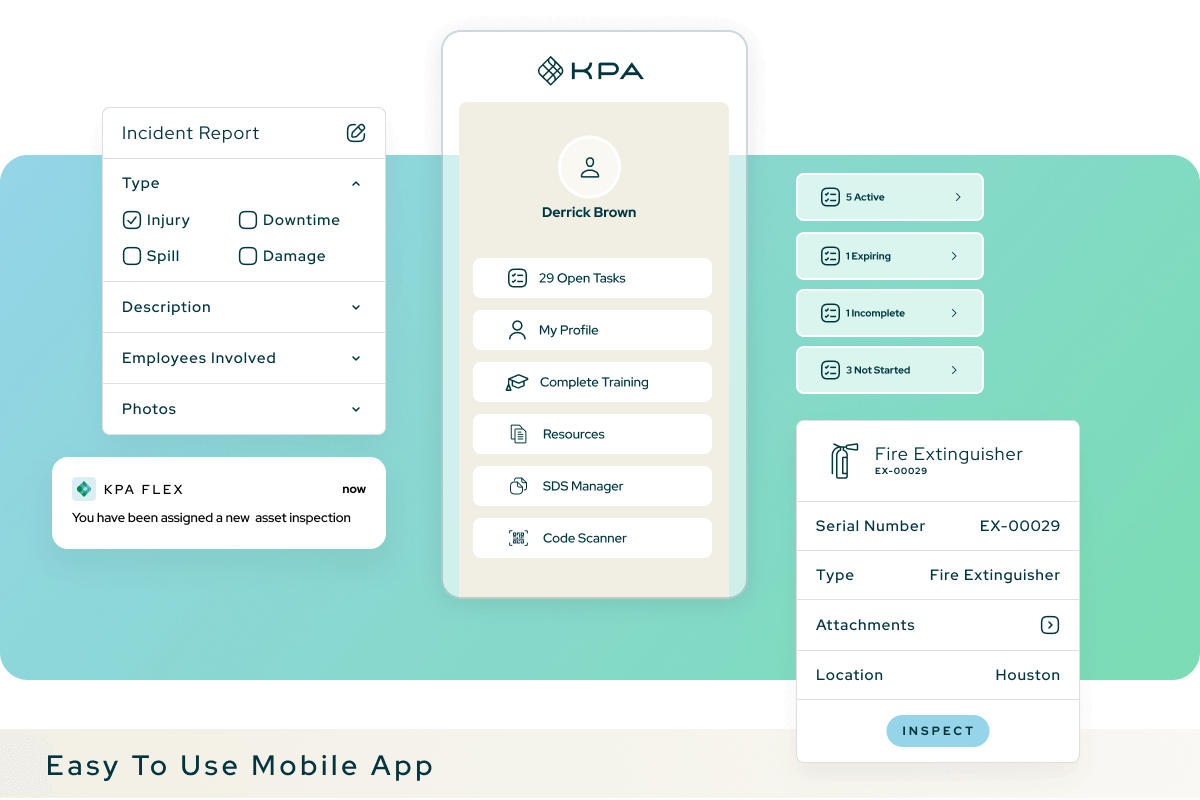
Related Content
Explore more comprehensive articles, specialized guides, and insightful interviews selected, offering fresh insights, data-driven analysis, and expert perspectives.


